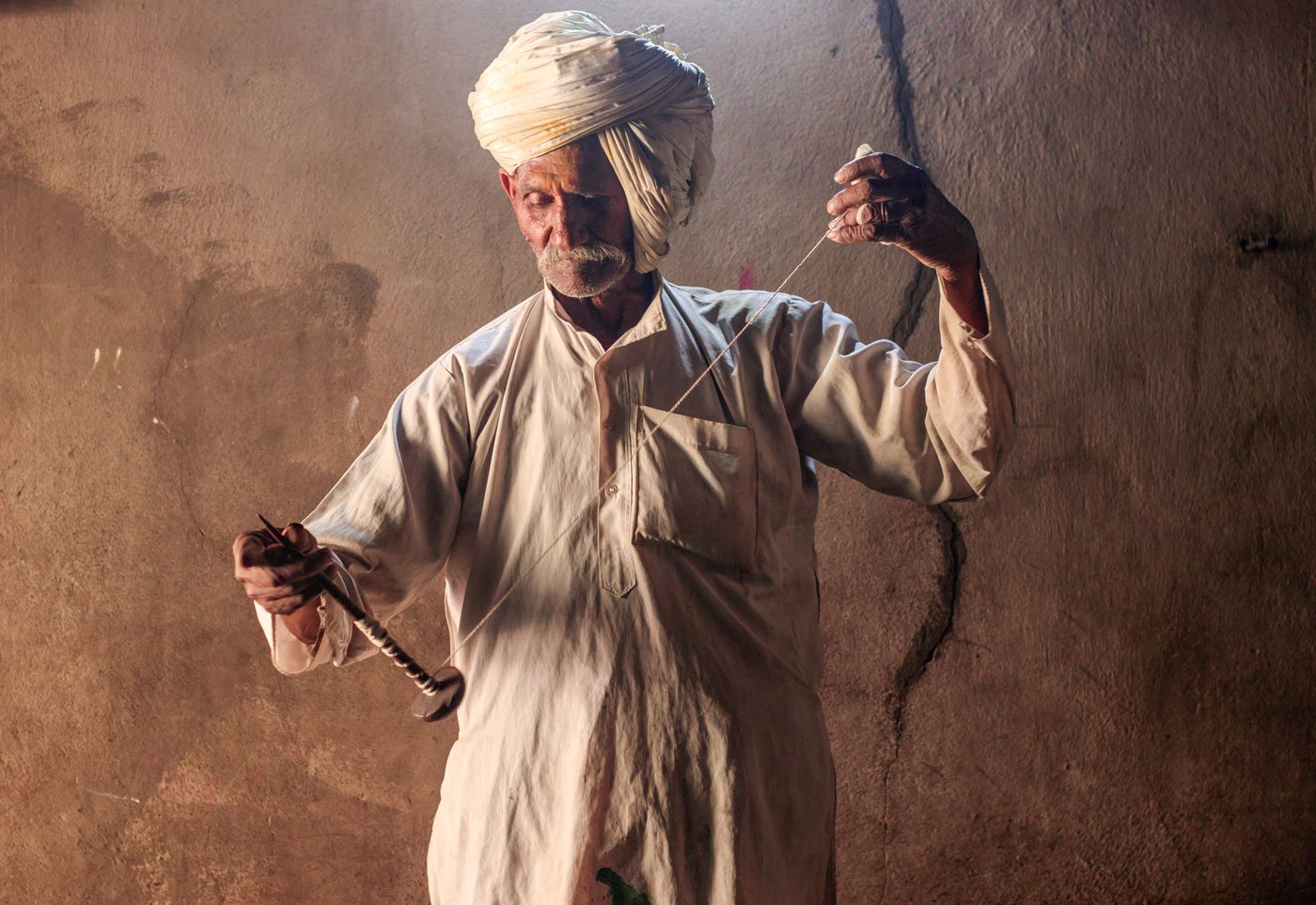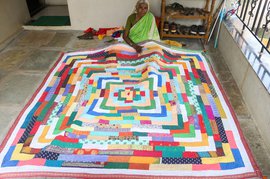When Siddu Gavade decided to go to school, his parents handed him 50 sheep to herd. Like many of his family and friends, he too was expected to follow the ancestral occupation of shepherding quite early in life; he never ended up going to school.
Gavade is from the Dhangar community of goat and sheep herders, listed as a Nomadic Tribe in Maharashtra. They spend as long as six months and even more rearing animals hundreds of kilometres away from their home.
One day while rearing sheep about a hundred kilometres from his home in north Karnataka’s Karadaga village, he saw a fellow shepherd making circular loops using a thread. “I found it fascinating.” He goes on to recall how the elderly Dhangar (shepherd) skillfully wove a jali (circular bag) with white cotton threads, the colour changing to a peanut brown as he progressed.
That chance meeting set the young boy on a journey practicing the craft that he would follow for the next 74 years and counting.
The jali is a symmetrical hand-knitted sling bag made of cotton threads and tied around the shoulder. “Almost every Dhangar carries this jali on their long journeys [herding],” says Siddu. “One can store at least 10 bhakris [flatbread] and a pair of clothes in it. Many Dhangars also keep betel nut leaves and tobacco, chuna [limestone powder] in it.”
The skill required to make one can be gauged from the fact that a jali is of a fixed measurement, but the shepherds do not use a scale or vernier calipers. “It should be a palm and four fingers tall,” says Siddu. Each jali he makes lasts at least 10 years. “It shouldn’t get wet in the rain. Also, rats love cutting this, so, one has to take extra care.”
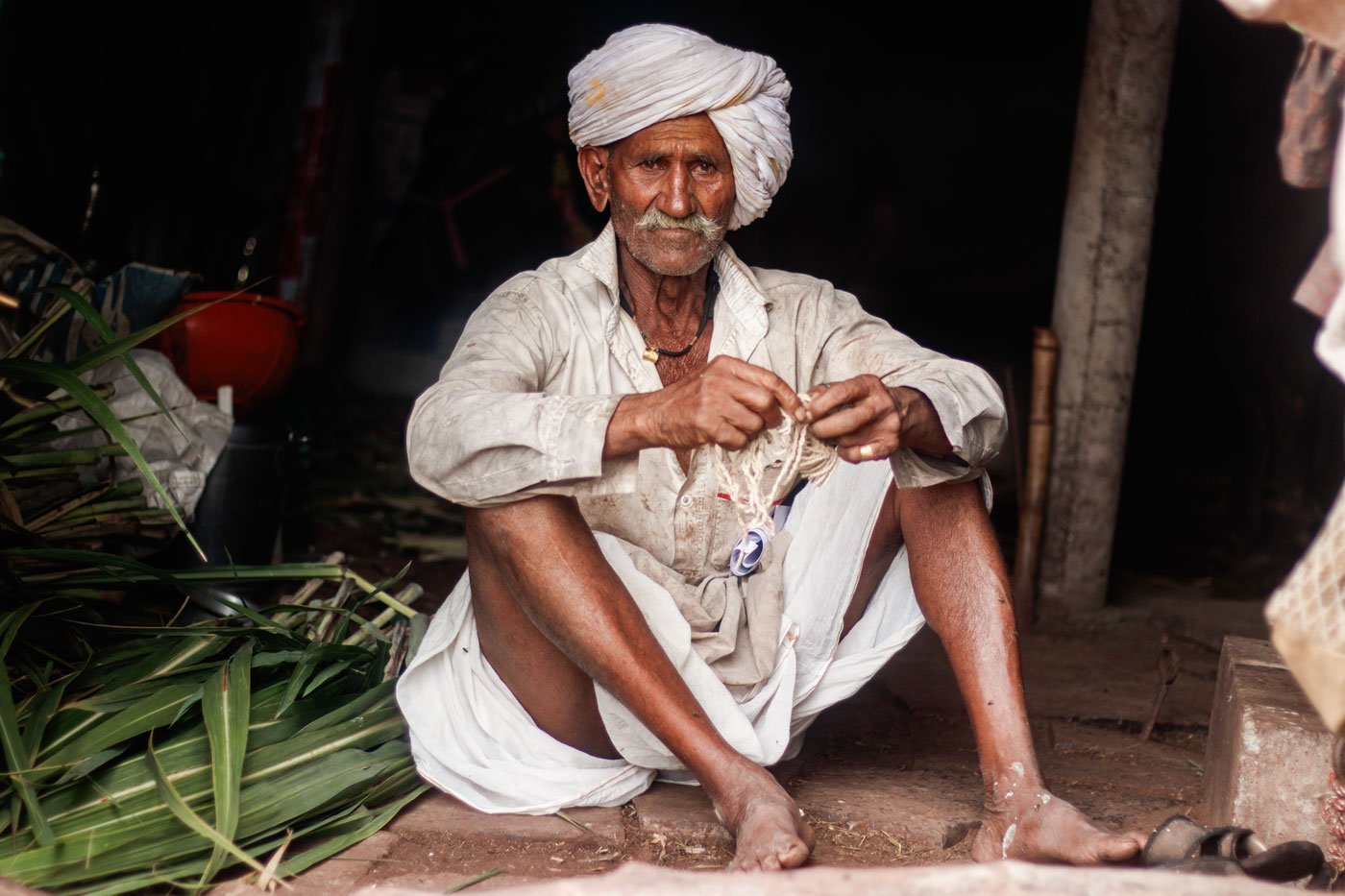
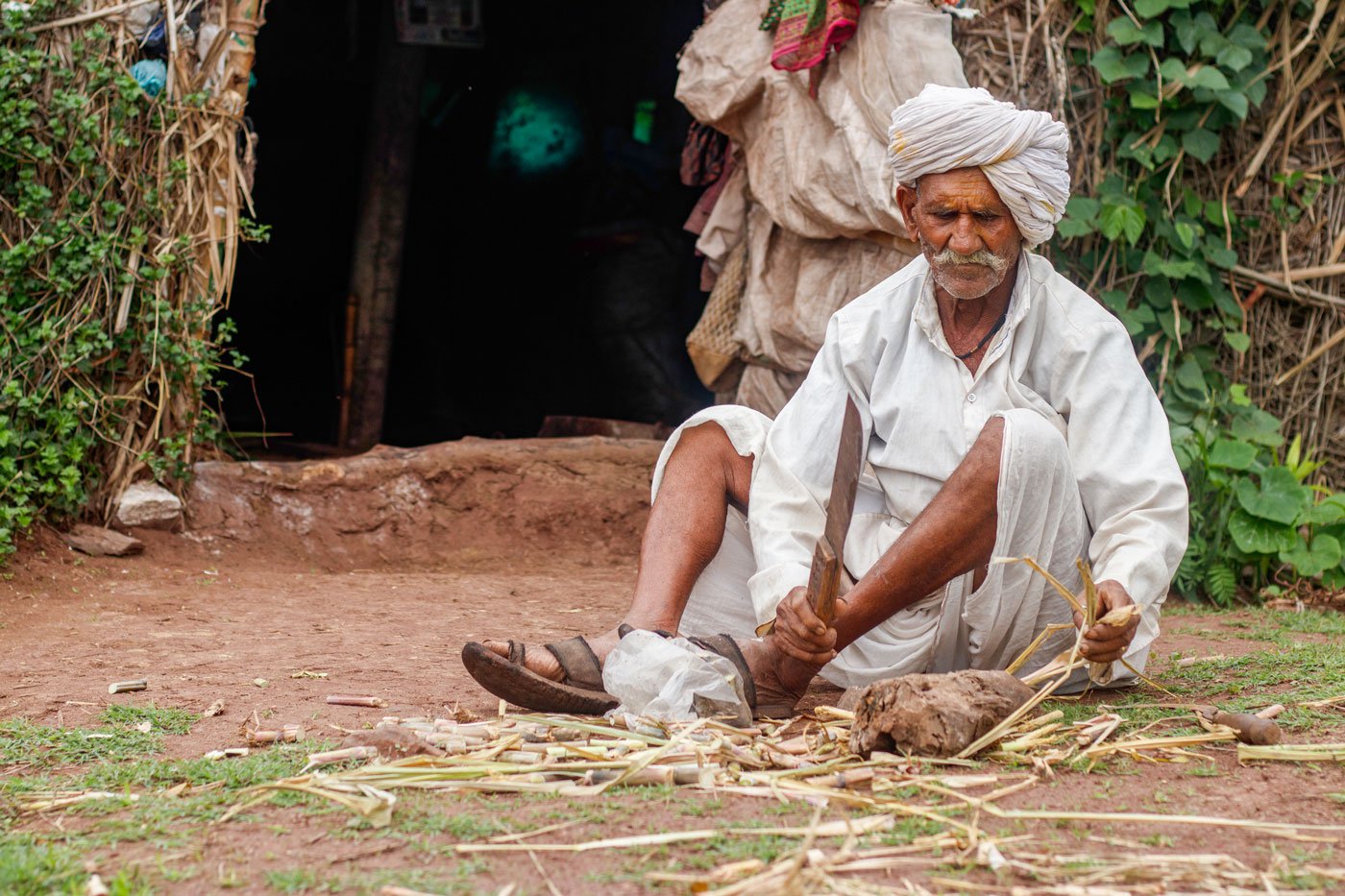
Siddu Gavade, a Dhangar shepherd, learnt to weave
jalis
by watching another, older Dhangar. These days Siddu spends time farming; he quit the ancestral occupation of rearing sheep and goats a while ago
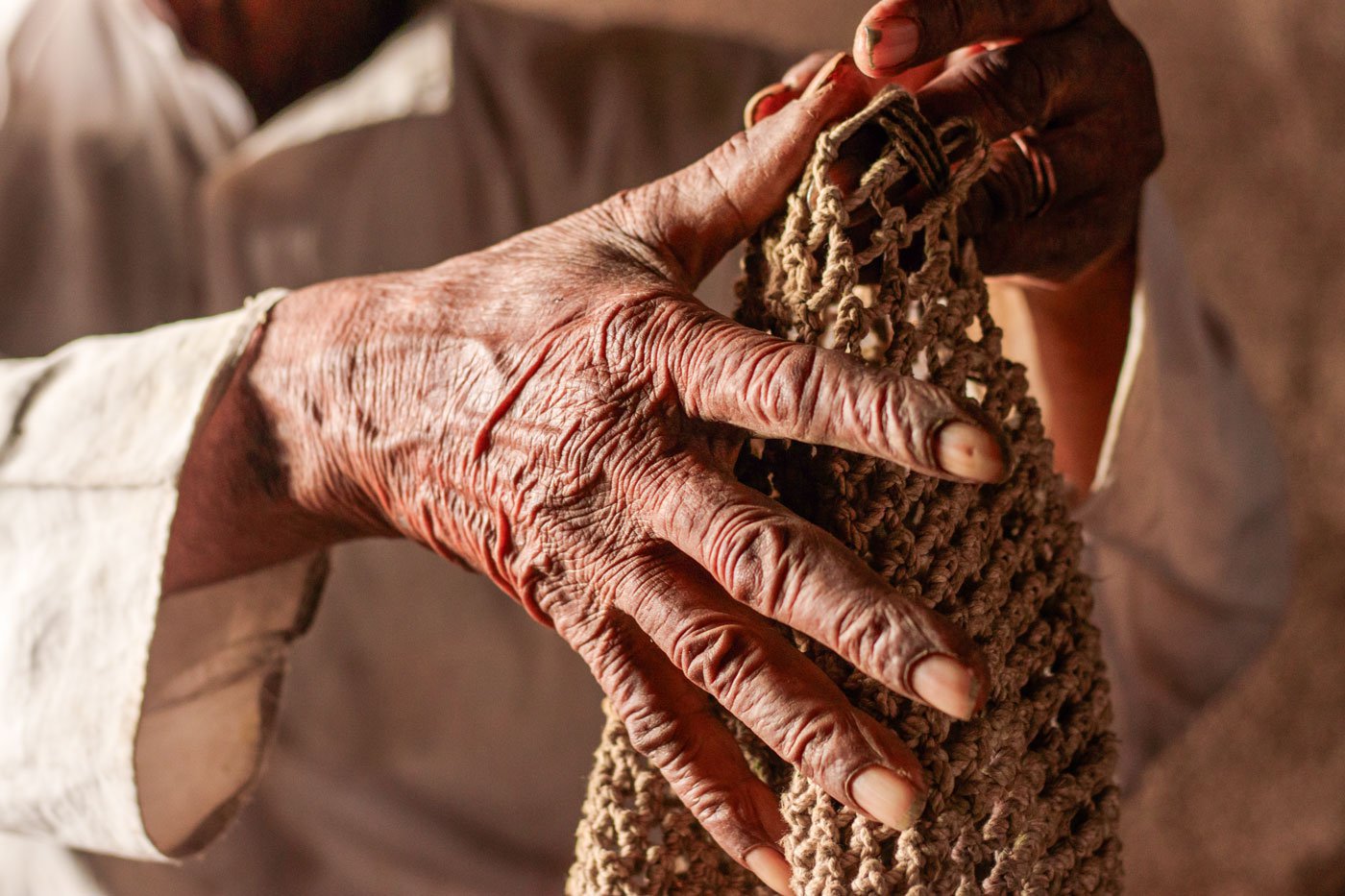
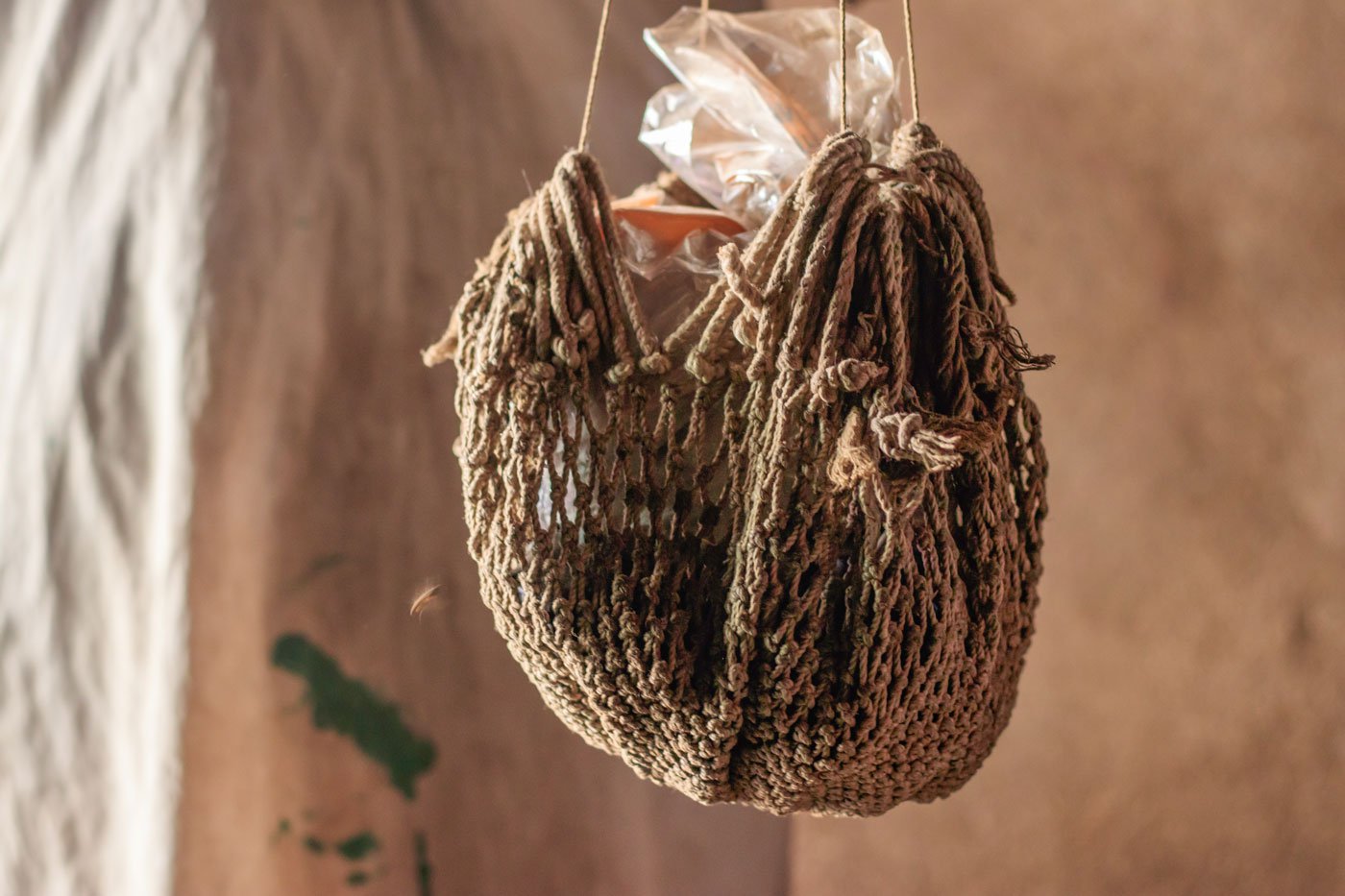
Siddu shows how he measures the jali using his palm and four fingers (left); he doesn't need a measure to get the dimensions right. A bag (right) that has been chewed by rodents
Today Siddu is the only farmer in Karadaga who can make a jali using cotton thread. “It’s called jalgi in Kannada,” he says. Karadaga lies close to the Maharashtra-Karnataka border in Chikodi (also spelt Chikkodi) taluka of Belagavi district. The village has around 9,000 people who speak both Marathi and Kannada.
In his childhood, Siddu would wait for the trucks bearing suti (cotton thread). “Because of the [strong] winds, threads would fall off [passing] trucks and I would collect them,” he explains. He would play with the threads attempting to make knots. “No one taught this art to me. I learned it by observing a mhatara [old] Dhangar.”
In the first year, Siddu just made loops and tried several attempts at making a knot. “Finally, after travelling thousands of kilometres with my sheep and dog, I learnt this complicated art,” he says. “The skill here lies in making equidistant loops in a circular shape and retaining the shape till the time the entire jali is ready,” shares the craftsman who does not use knitting needles.
A thin thread does not make proper knots, so the first step for Siddu is making the thread thicker. To do this, he uses roughly 20 feet of white thread from a bigger roll. He swiftly ties it around traditional wooden equipment called takli or bhingri in Marathi. A takli is a long wooden tool, around 25 centimetres long with a mushroom shaped curvature on one end and pointed at the other.
He then places this 50-year-old babul (acacia wood) takli on his right leg and swiftly rotates it. Without stopping the movement, he lifts the takli with his left hand and starts pulling off the thread. “This is the traditional method of making a thread thicker,” he shares. And it takes him roughly two hours to roll 20 feet of thin thread.
Siddu has stuck to this process because buying a thicker thread, he says, is expensive. “ Teen padar cha karava lagte [The thread has to be made of three strands].” However, the friction between the leg and takli causes abrasion and inflammation, “ Mag kai hotay, don divas aaram karaycha [Then what happens? Just take rest for two days],” he says laughing.
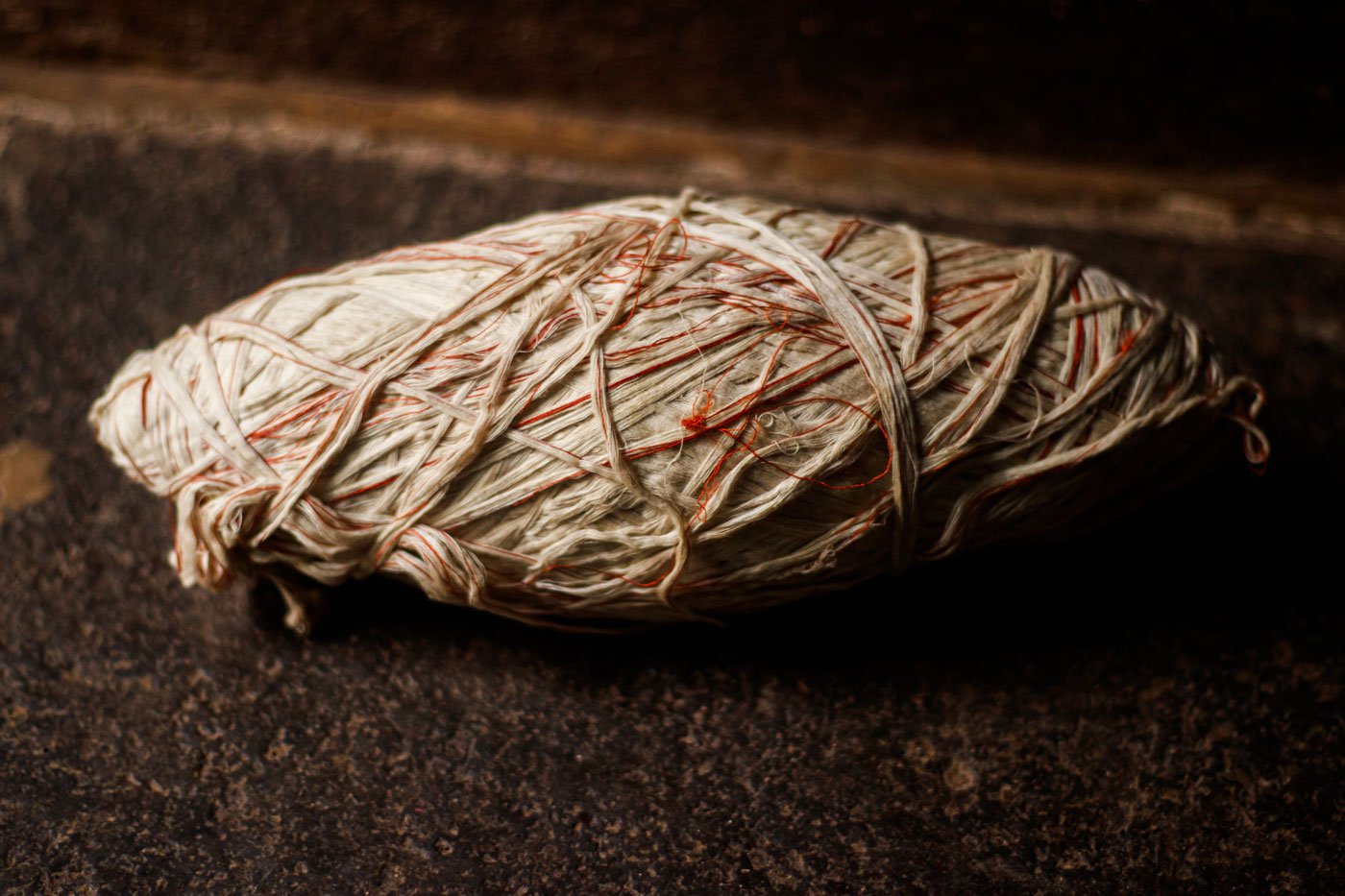
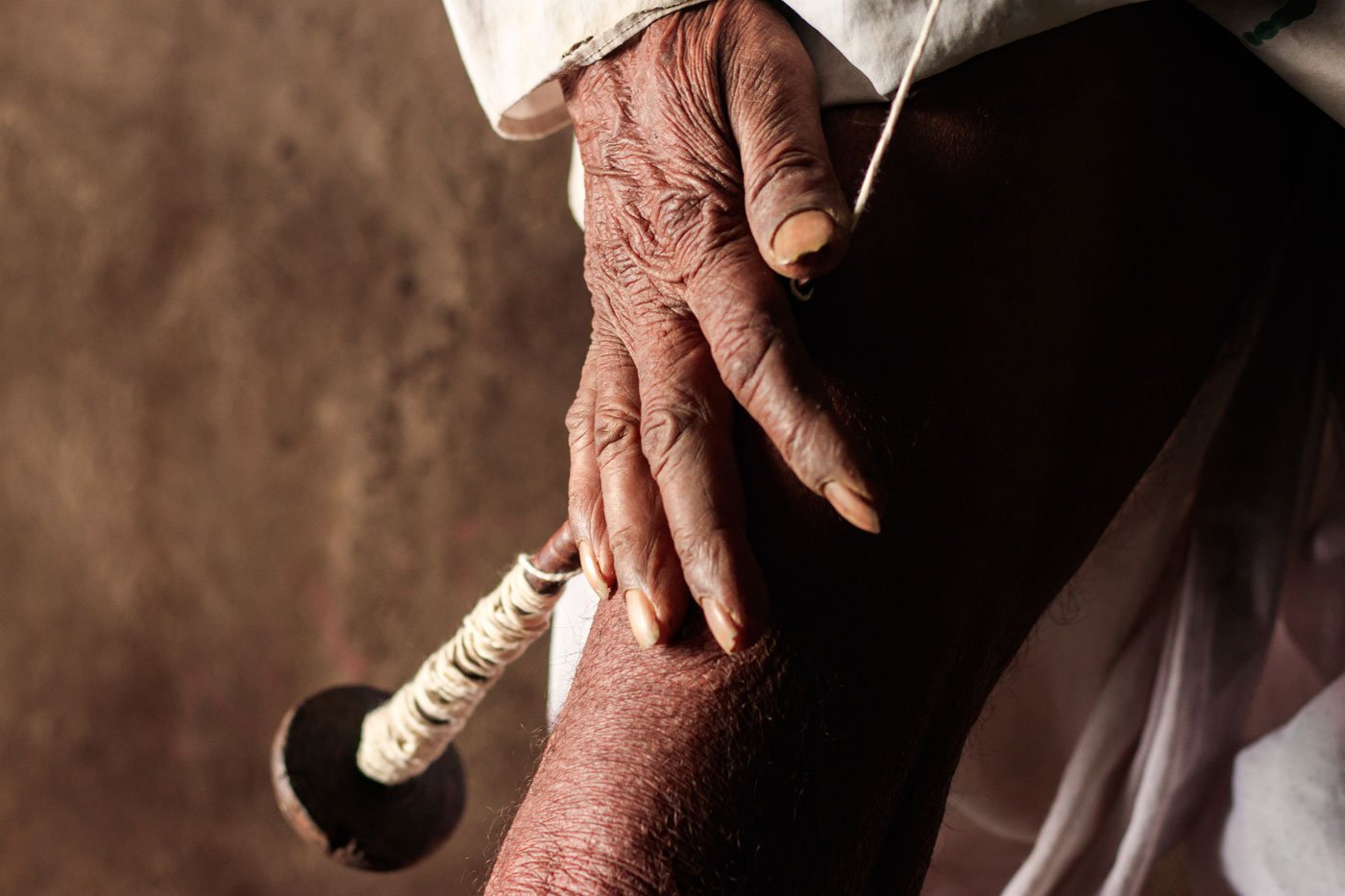
Siddu uses cotton thread to make the jali . He wraps around 20 feet of thread around the wooden takli , which he rotates against his leg to effectively roll and thicken the thread. The repeated friction is abrasive and inflames the skin
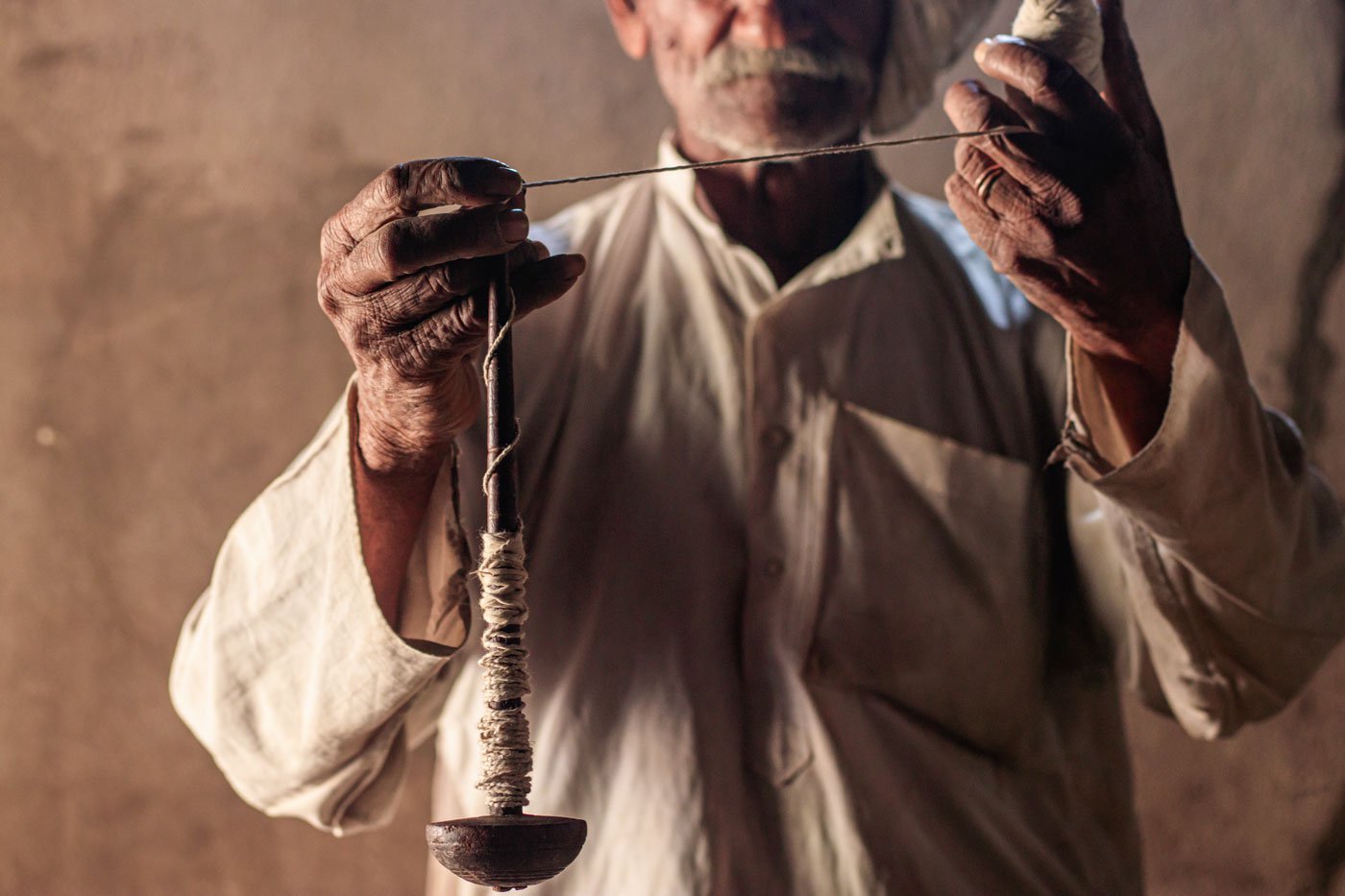
There is a particular way to hold the takli and Siddu has mastered it over the years: 'In case it's not held properly, the thread doesn't become thick'
Finding a takli has become difficult now, Siddu says, “The young carpenters don’t know how to make it.” In the early 1970s he got it from a village carpenter for Rs. 50, a princely sum – a kilogram of good quality rice would cost just a rupee.
To make a jali he buys around two kilograms of cotton thread, and depending on the thread’s density and thickness he rolls out the many feet of thread. Until a few years ago he used to purchase cotton thread from Maharashtra’s Rendal village, nine kilometres away. “Now, the thread is readily available in our village, and costs around 80-100 rupees a kilogram, depending on the quality.” He recalls that the same thread cost him Rs. 20 a kilogram in the late 90s, and he would buy around two kilos.
While the art of making jali , he says, has traditionally been in the hands of men, his wife, the late Mayavva, helped him thicken the threads. “She was a master artist,” recalls Siddu. Mayavva passed away in 2016 after kidney failure. “She got the wrong treatment. We had gone for getting asthma treated, and the medicines had such a painful side effect that her kidney failed,” he says.
Siddu says, women like his late wife, master the skill of sheep shearing and making wool threads. Dhangars then give these threads to Sangars who make Ghongadi (woollen blankets) on pit looms – a loom that fits in a pit and the weaver uses pedals to weave.
Depending on the requirement and the time on hand, Siddu make threads thicker. He then moves on to the most complicated part of finger-knitting, a jali where he swiftly makes a slip knot by interlacing the yarn loops and tying the knots. For one bag he makes a chain of 25 yarn loops placed equidistant.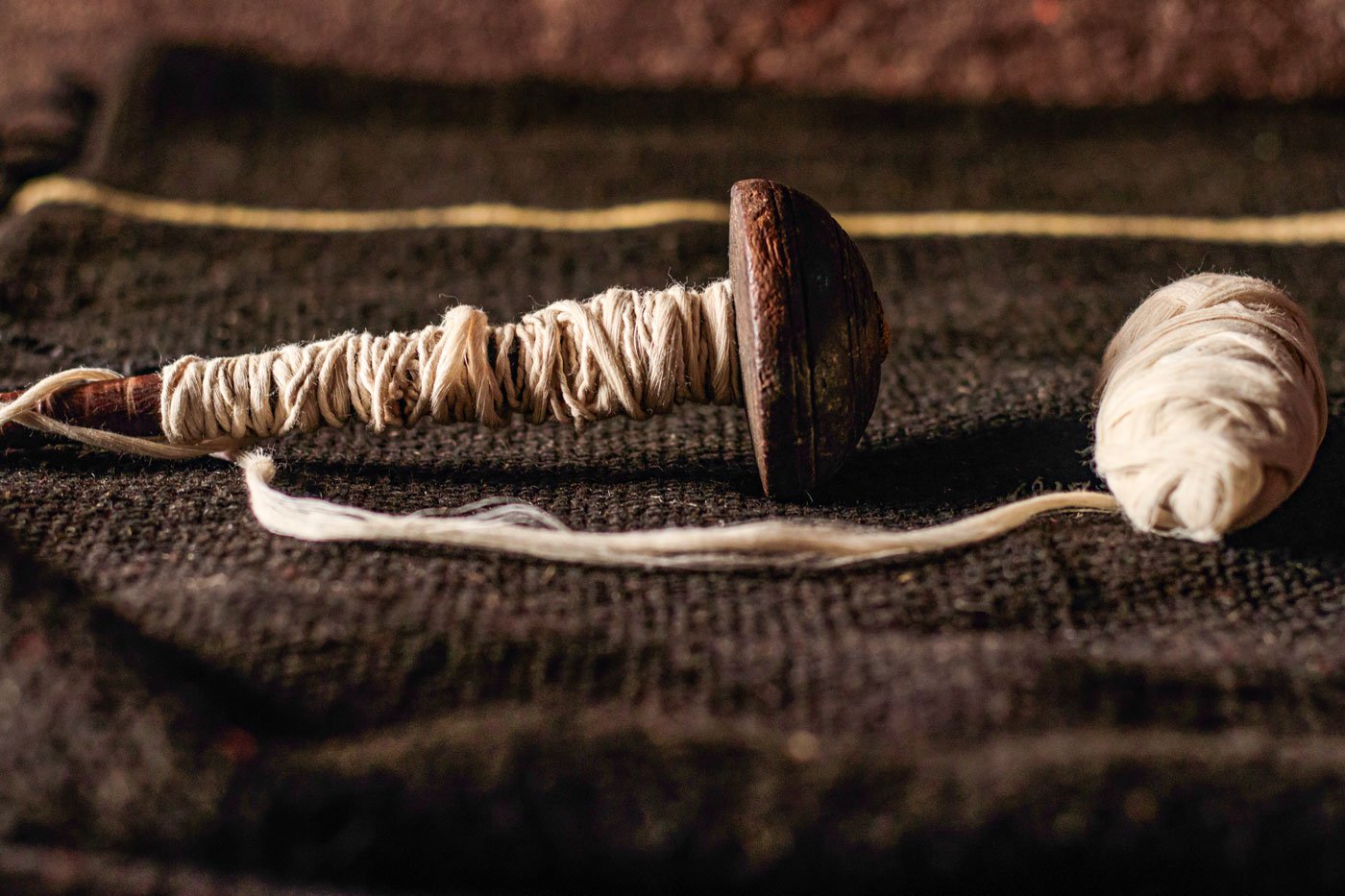
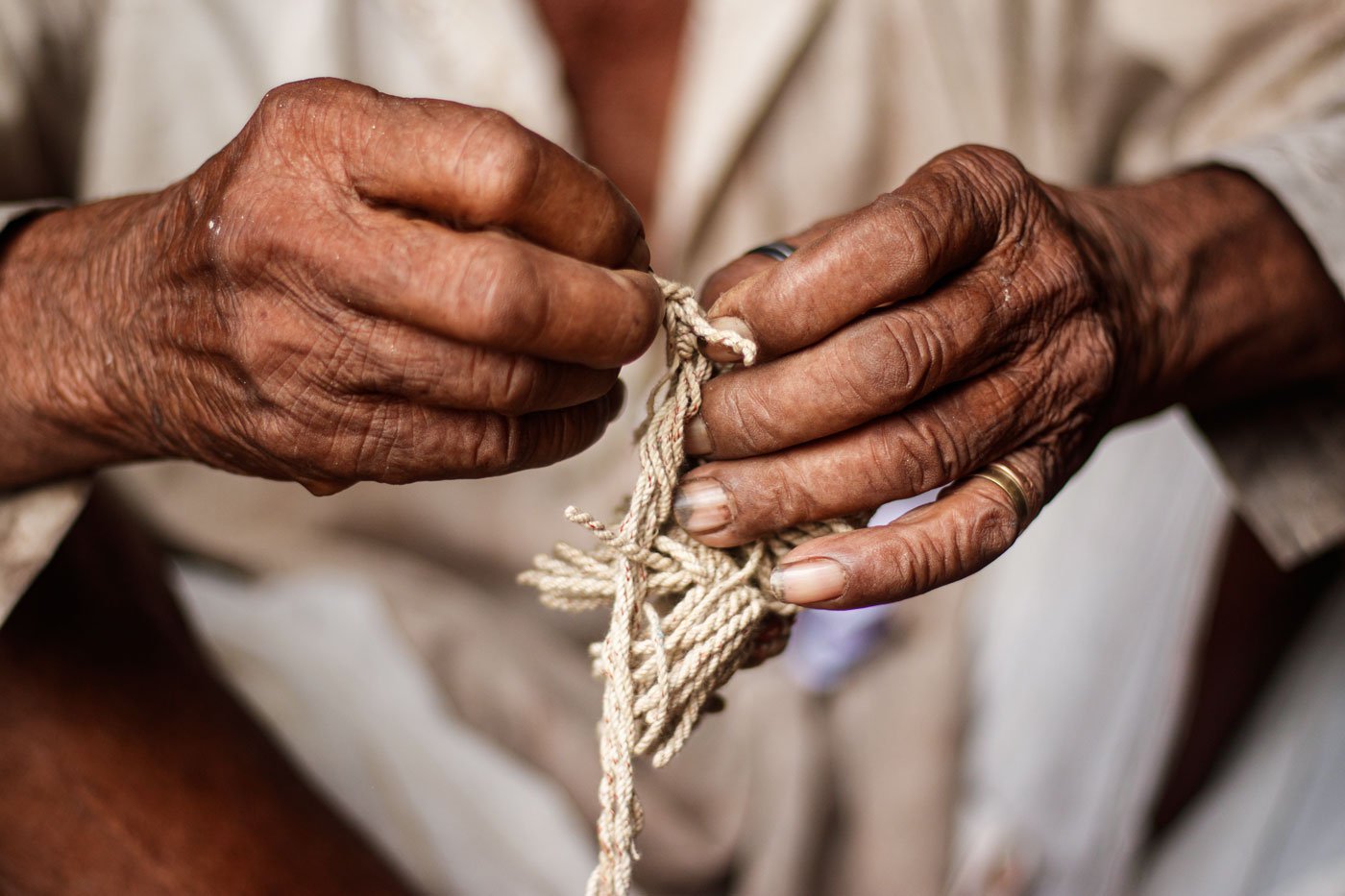
Left: The takli made of babul (acacia) wood cost as much as 50 kilos of rice when he first bought it 50 years ago. Today there are no carpenters making it. Right: Every knot Siddu makes is equal in size. Even a slight error means the jali won't look as good
“The most difficult part is starting and making the loops in a circular form.” He adds that 2-3 Dhangars in the village know how to make a jali , but “they always struggle with making the circular structure which forms its base. So, they don’t make it anymore.”
Siddu spends over 14 hours making the circular structure. “If you make a mistake, you have to redo the entire process.” It takes at least 20 days to make one jali , provided Siddu gets to work on it daily for at least three hours. He knits over 300 feet of thread across 60 hours with every knot of the exact measurement. Siddu, who now spends a good deal of time farming, makes the time to knit a jali . In the past seven decades, he has made over 100 jalis for several Dhangars, spending over 6,000 hours mastering the art.
Siddu is also fondly called patkar mhatara (old man with a turban) – he wears a white pagdi every day.
Despite his age, he has been walking 350 kilometres back and forth to Vithoba’s temple in Pandharpur town of Maharashtra’s Solapur district for the famous Wari for nine years now. Devotees from across Maharashtra and a few districts of Northern Karnataka walk in groups during ashadh (June/July) and kaartik (after Diwali during October-November). They sing devotional songs called abhangs and poems of saints Tukaram, Dnyaneshwar, and Namdev.
“I don’t take a vehicle. Vithoba aahe majhyasobat. Kahihi hot nahi [I know Vitthoba is with me, and nothing will happen],” he says. It took him 12 days to reach the Vitthal-Rukmini temple in Pandharpur; when he stopped to rest, he would pick up the cotton thread to make loops.
Siddu’s father, the late Balu, used to make jalis too. Since barely any jali artists are left, many Dhangars have switched to buying cloth bags. “Looking at the time and resources involved, it is not affordable to continue this art form,” says Siddu. He spends around Rs. 200 on the thread, and a jali sells for Rs. 250 to 300. “ Kahihi upyog nahi [There’s no point to this],” he shares.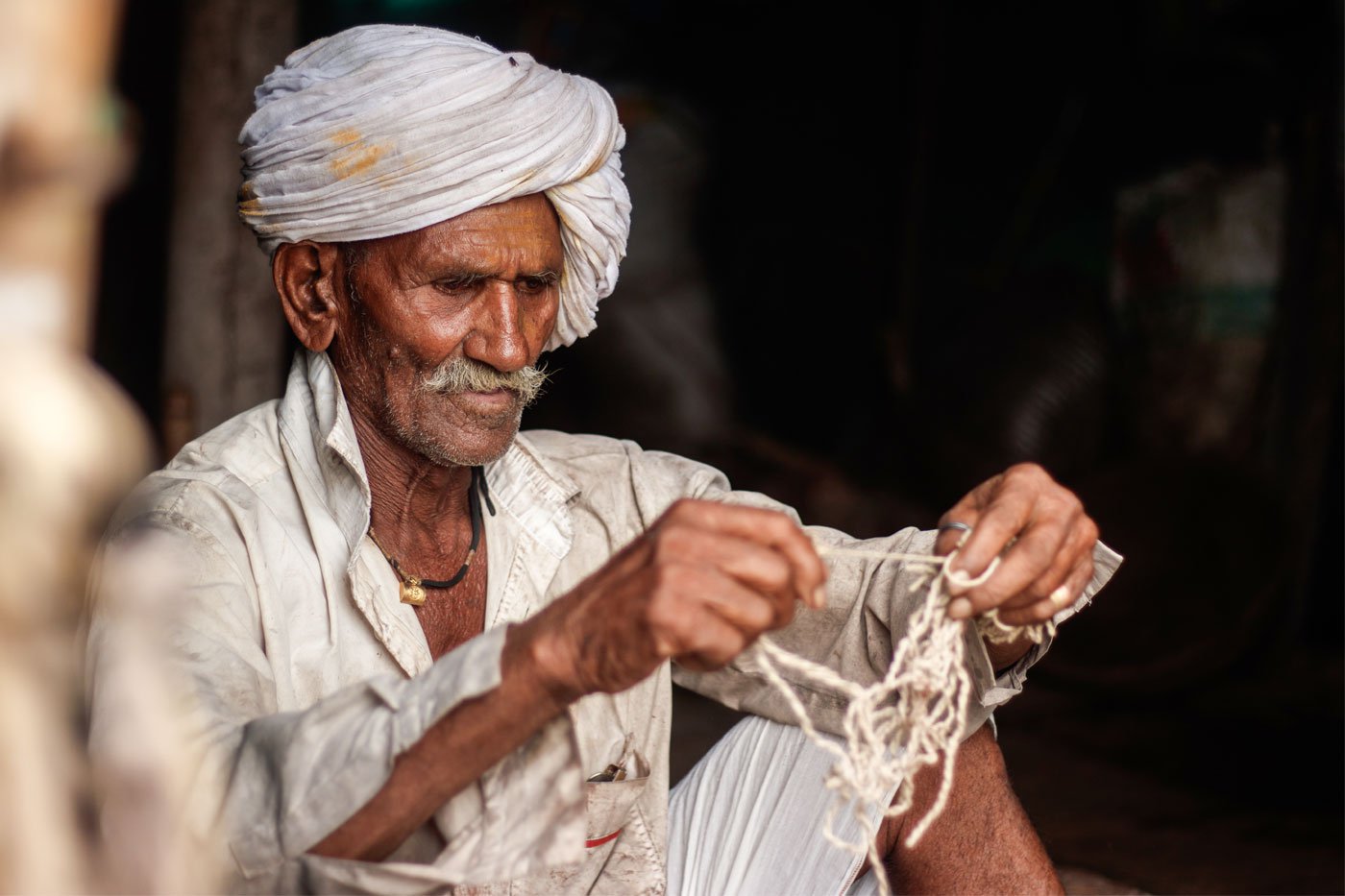
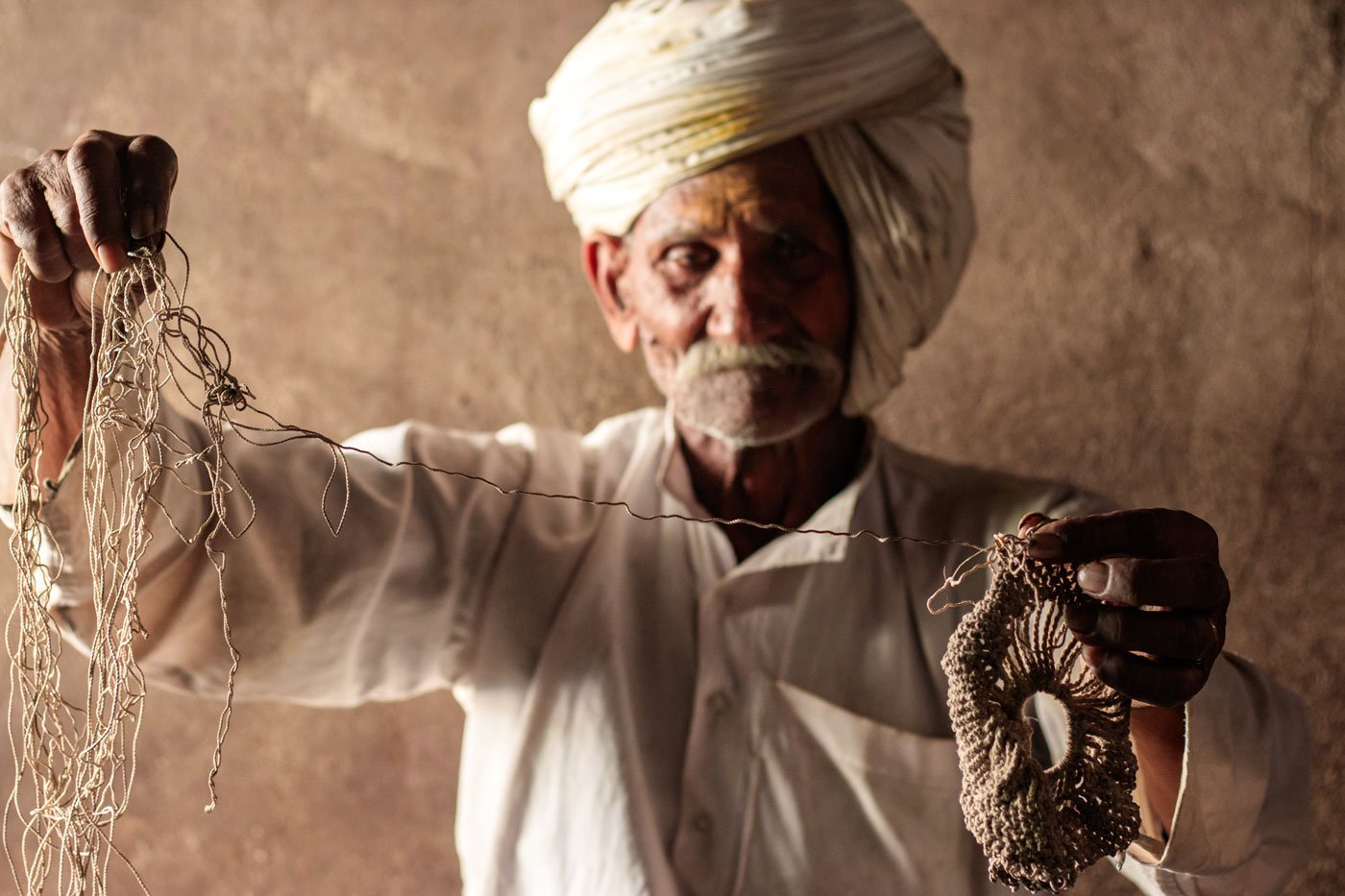
'The most difficult part is starting and making the loops in a circular form,' says Siddu. Making these loops requires a lot of patience and focus
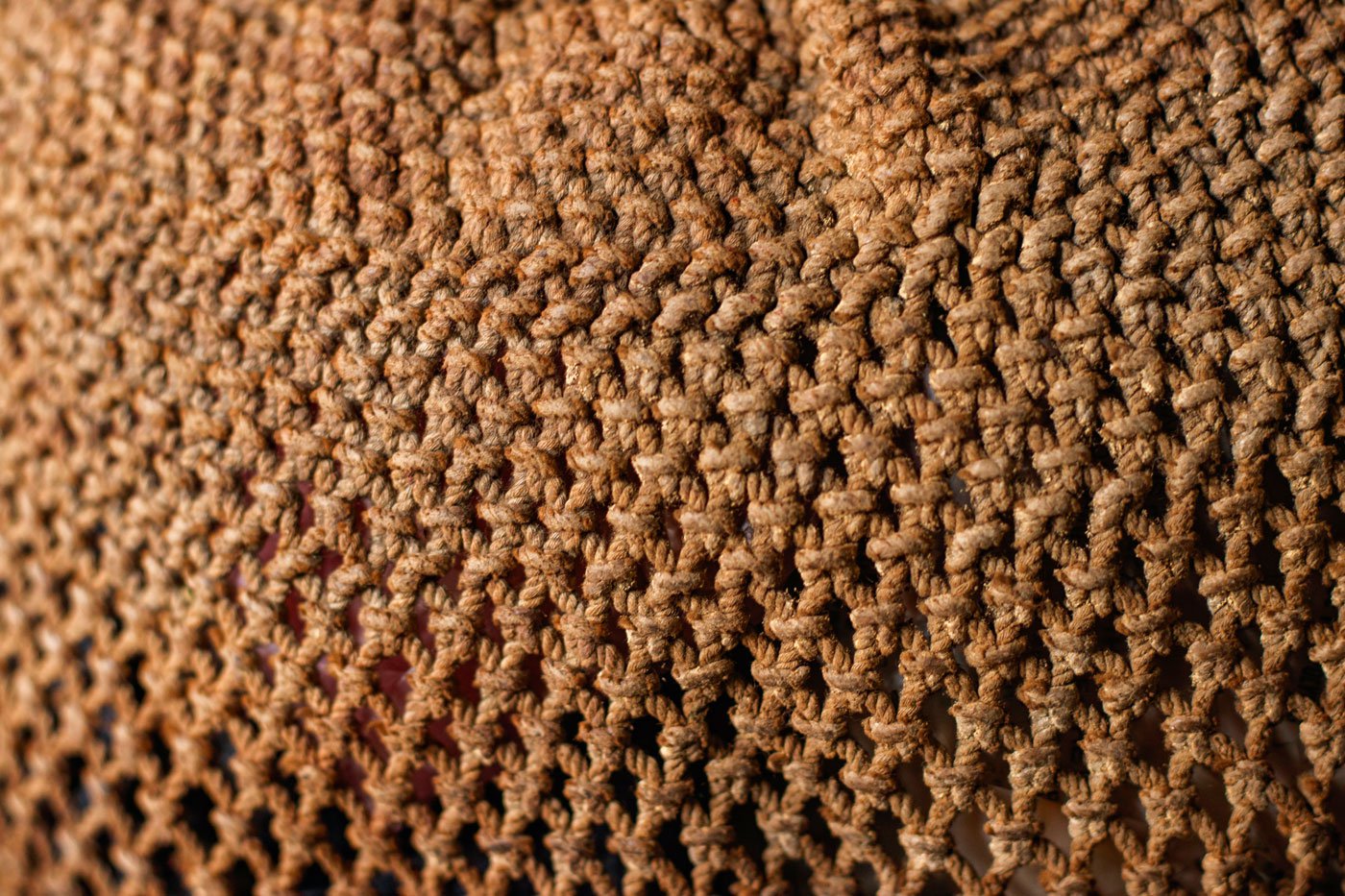
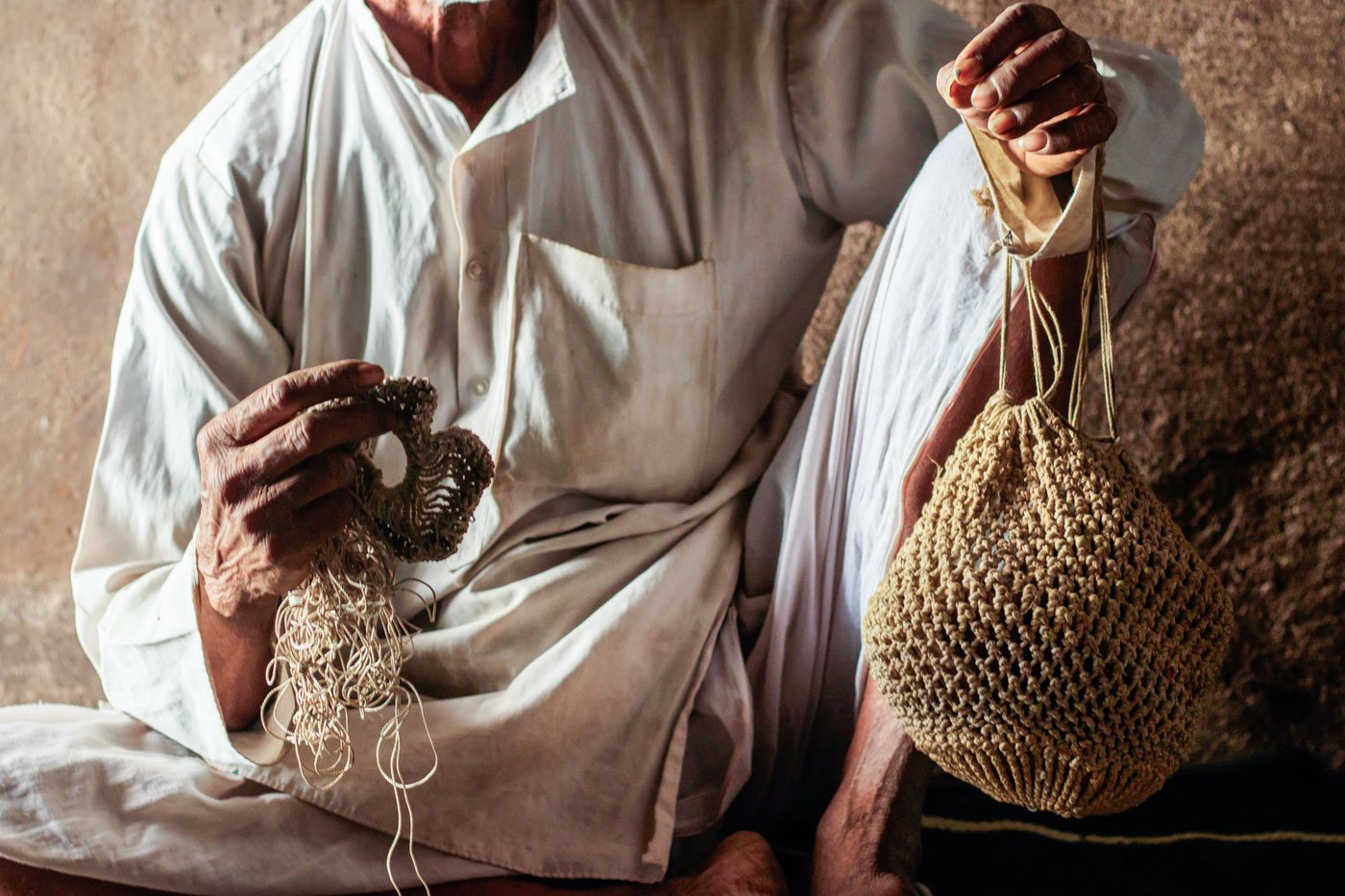
Left: After spending over seven decades mastering the art, Siddu is renowned for making symmetrical jalis and ensuring every loop and knot is of the same size. Right: He shows the beginning stages of making a jali and the final object
He has three sons and a daughter. Mallapa, in his early 50s and Kallapa, around 35, both quit sheep herding and now work as farmers on an acre of land each. While Balu, 45, works as a farmer and travels to faraway places to rear and herd 50 sheep. His daughter, Shana, in her early 30s, is a homemaker.
None of his sons learned this skill. “Shikli bhi nahi, Tyana jamat pan nahi, aani tyani doska pan ghatla nahi [They haven’t even learnt, neither did they try it, and neither put their mind to it],” he says in one breath. People carefully see his work, but he says none has come to learn the art.
Making a loop looks easier but comes with tremendous challenges, which often cause physical strain for Siddu. “ Hatala mungya yetat [pins-and-needle sensation] , ” he says. Also, this work causes him a lot of back ache and is a strain on the eyes. A few years ago both his eyes were operated on for cataract surgery, and now he uses spectacles. While this has slowed his speed, his determination to keep the art alive stands intact.
A research paper on India’s fodder production published in January 2022 in Grass and Forage Science noted that India faces a shortage of green fodder as well as feed ingredients and even dry crop leftovers – highlighting a major cattle feed problem.
Lack of fodder is among the reasons why only a few Dhangars now rear goats and sheep in his village. “In the past 5-7 years, we have reported several sheep and goat deaths. This is because of farmers' rampant use of weedicides and pesticides,” he says. Karnataka’s farmers used 1,669 metric tonnes of chemical pesticides in 2022-23, according to the union Ministry of Agriculture and Farmers Welfare . This was up from 1,524 metric tonnes in 2018-19.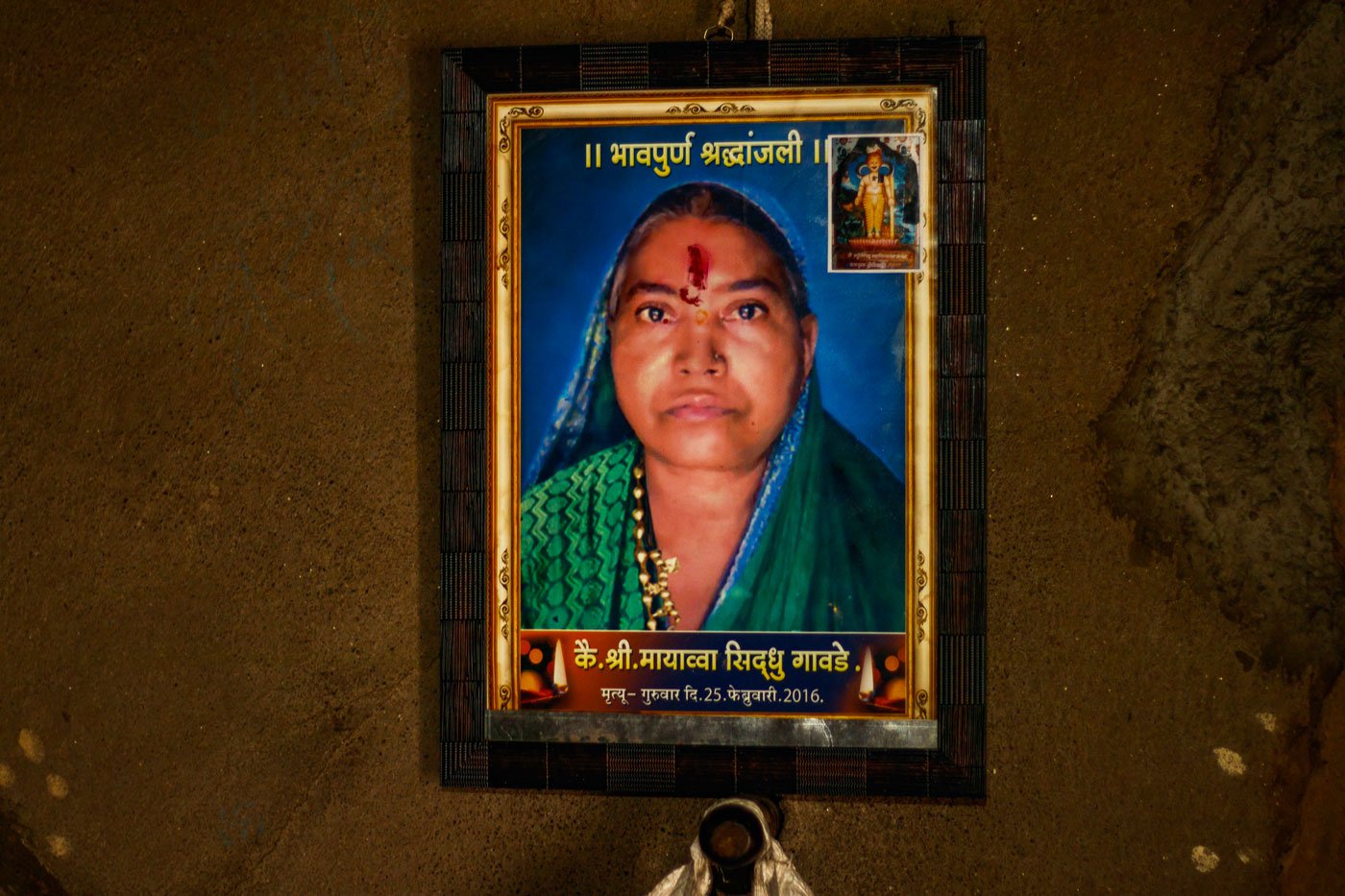
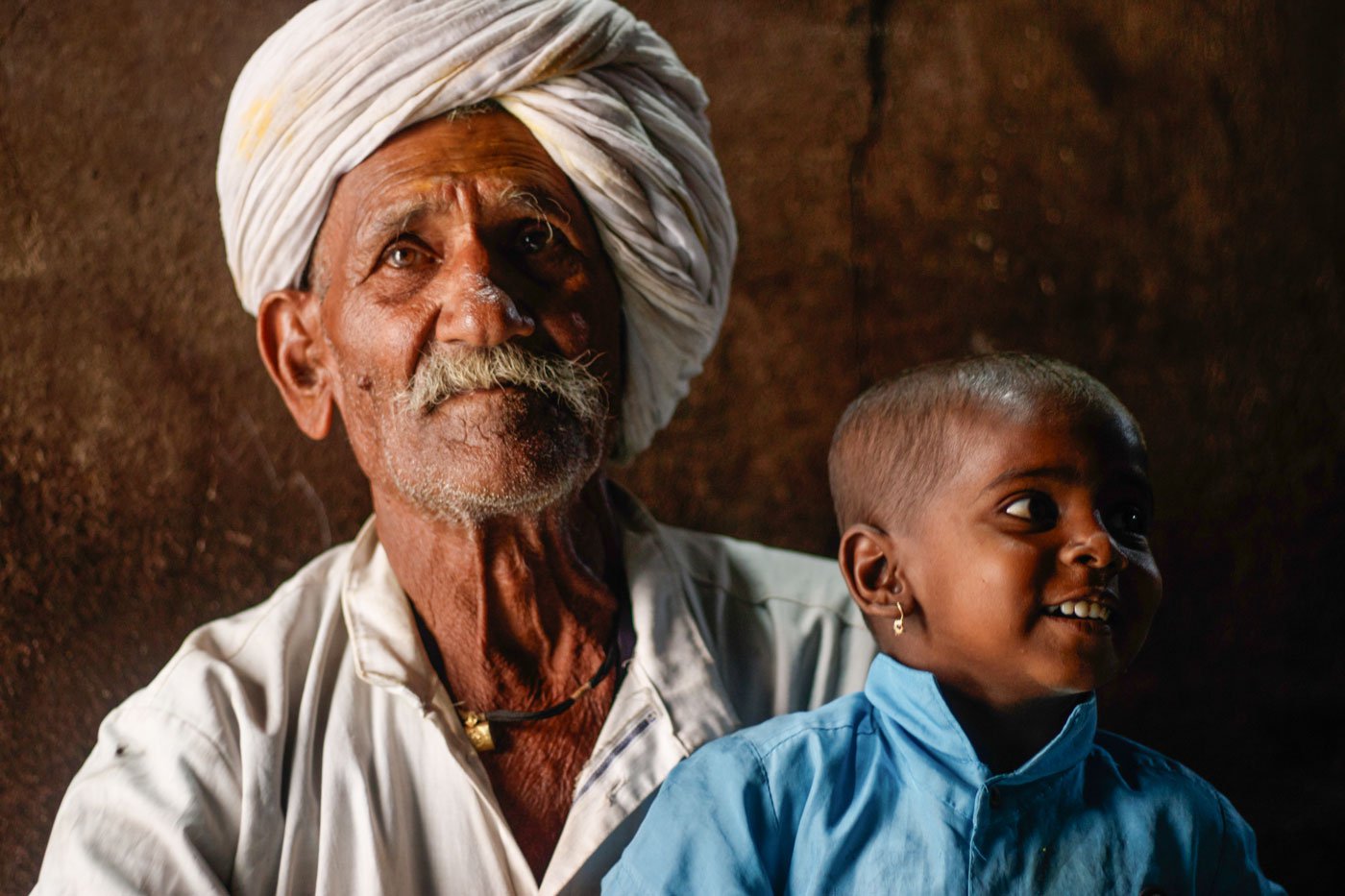
Left: Siddu's wife, the late Mayavva, had mastered the skill of shearing sheep and making woolen threads. Right: Siddu spends time with his grandson in their house in Karadaga village, Belagavi
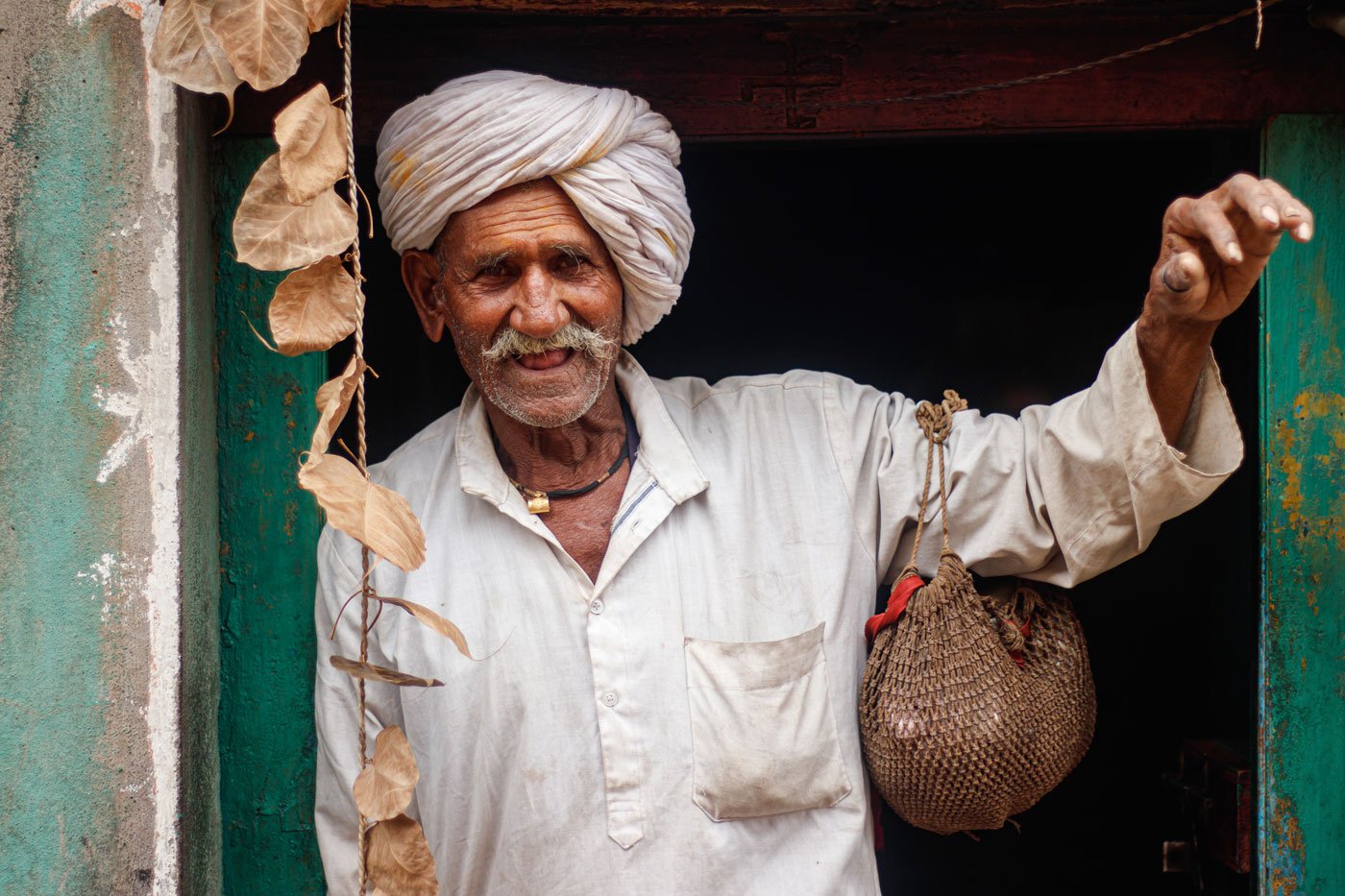
The shepherd proudly shows us the jali which took him about 60 hours to make
He further says that the cost of rearing has increased tremendously, and a hidden cost element is the rising medical costs. “Every year, one has to spend at least 20,000 rupees on the animals’ medicines and injections because the sheep and goats are falling ill recurrently.”
He adds that every sheep must be given six injections (vaccinations) every year. “If a sheep survives, only then can we earn some money.” Also, farmers are using every inch of land to cultivate sugarcane in the region. During 2021-2022, India produced over 500 million metric tons of sugarcane, emerging as the world’s largest sugar producer and consumer.
Siddu stopped rearing sheep and goats two decades ago and distributed the 50 odd animals among his sons. He talks about how the delay in monsoon showers has impacted the farming cycle. “This year, from June to mid-July, my three-acre land was vacant because there was no water. Somehow after a neighbour helped me, I managed to cultivate groundnut.”
A rise in the number of heat waves and incessant rainfall patterns are making farming a challenge, he says. “Earlier, parents handed over several sheep and goats to their children [as security]. Now times have changed so much that none wants to keep them even if given for free.”
This story is part of a series on rural artisans by Sanket Jain, and is supported by the Mrinalini Mukherjee Foundation.
